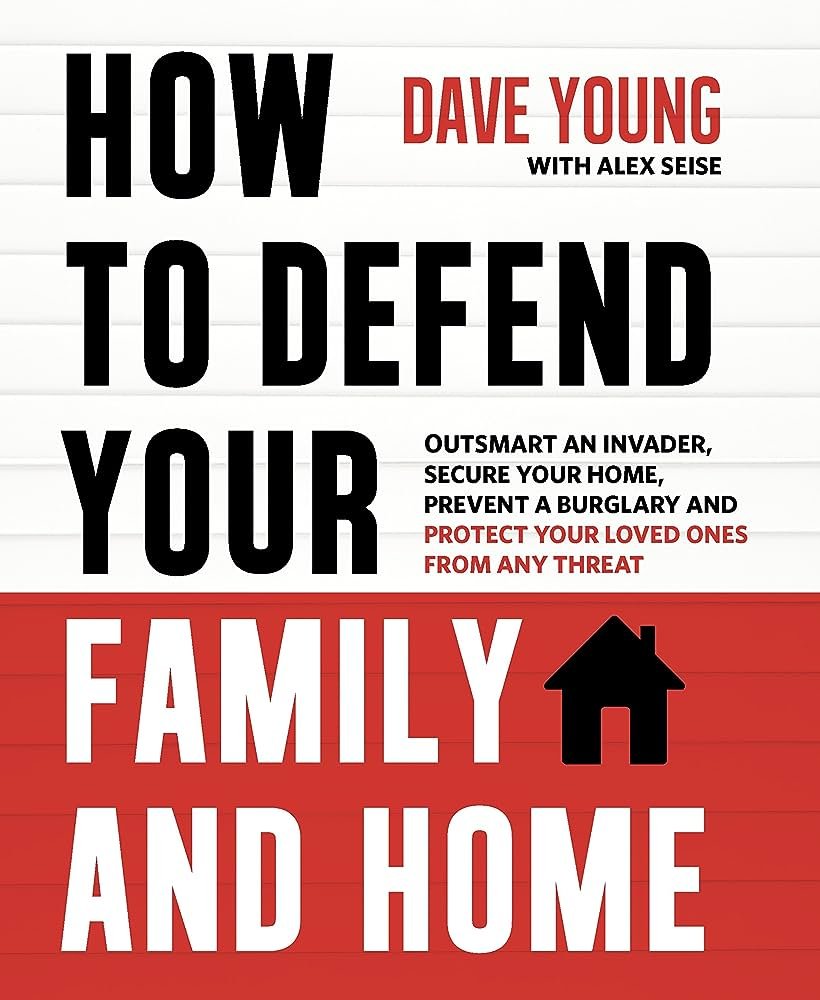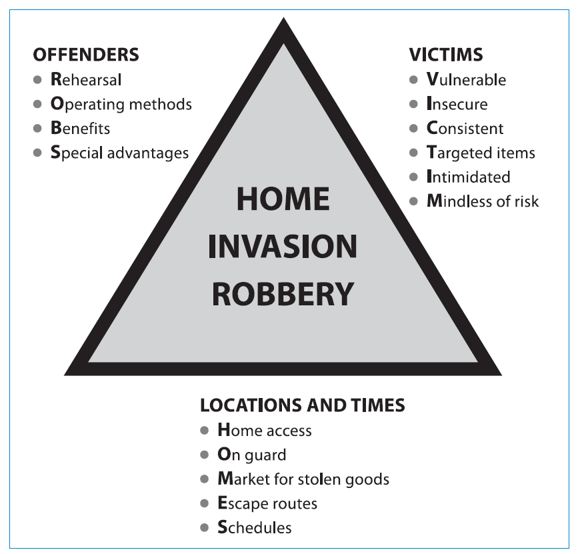When it comes to the safety of your home and loved ones, it’s important to be prepared for any potential threats. In this article, we’ll explore different strategies and measures you can take to protect yourself and your family in the event of a home invasion or burglary. From securing your doors and windows to investing in home security systems, you’ll discover practical tips and advice that can help you create a safety plan that suits your specific needs. So let’s dive in and learn more about how you can ensure the safety and well-being of your family in case of a home invasion or burglary. Home invasions and burglaries are unfortunate events that can pose a significant threat to the safety and security of you and your family. However, by taking proactive measures and implementing effective security strategies, you can greatly reduce the risk of becoming a victim. In this article, we will explore various methods and techniques that you can use to protect yourself and your family in case of a home invasion or burglary.

This image is property of Amazon.com.
Securing Your Home’s Entry Points
Securing the entry points of your home is crucial in preventing unauthorized access. Start by ensuring that all doors and windows are made of sturdy materials and have reliable locks. Consider upgrading to deadbolt locks for added security. Reinforce weak points such as sliding glass doors with security bars or panels. Install window security film to make it more difficult for intruders to break the glass.
Additionally, consider installing door and window sensors that can detect any unauthorized entry attempts. These sensors will trigger an alarm when someone tries to tamper with the entry points, alerting you and potentially scaring off the intruder.
Installing a Burglar Alarm System
Investing in a burglar alarm system is one of the most effective ways to deter home invasions and burglaries. These systems typically include motion sensors, door/window sensors, and a control panel. When an intruder triggers the sensors, the alarm will sound, alerting you and your neighbors to the potential threat.
Additionally, many modern alarm systems offer remote monitoring and control features. This enables you to arm or disarm the system from anywhere using your smartphone or computer. Some systems also include professional monitoring services, where a security company will immediately respond to any alarms raised.
Using Outdoor Lighting
Proper outdoor lighting is an essential part of your home security strategy. Well-lit surroundings make it difficult for burglars to approach your home unnoticed. Install motion-activated outdoor lights around your property, particularly near entry points and vulnerable areas such as windows and backdoors. This will ensure that anyone approaching your home is immediately illuminated, discouraging potential intruders.
Consider using energy-efficient LED lights, as they are long-lasting and cost-effective. Additionally, you may want to keep some lights on timers or use smart lighting systems that allow you to control the lighting remotely. This way, you can make it seem like someone is home even when you’re away.
Securing Valuables in a Safe
Protecting your valuables is an essential part of home security. Invest in a high-quality safe that is fireproof and specifically designed to deter burglars. Safes can be used to store important documents, jewelry, cash, and other valuable items. Choose a safe that is both heavy enough to prevent easy removal and securely bolted to the floor or wall.
Remember to regularly update your safe’s security code or password and avoid sharing it with anyone outside your immediate family. Consider keeping a record of your valuable items, including serial numbers and photographs, in case you need to file an insurance claim.

This image is property of Amazon.com.
Keeping Your Home Occupied
One effective way to deter burglaries and home invasions is to make it appear as if someone is always home. Burglars are more likely to target unoccupied homes, as they offer a higher chance of success without being noticed. Here are some strategies you can use to create the illusion of occupancy:
- Use timers to control your lights, radio, or television. Set them to turn on and off at different times, simulating the presence of people inside the house.
- Have a trusted neighbor or family member collect your mail, packages, and newspapers while you are away.
- Consider hiring a house-sitter or pet-sitter, especially for longer periods of absence.
- Install smart home devices such as smart plugs or smart appliances that can be controlled remotely. This allows you to turn them on or off even when you’re not home.
By implementing these measures, you can significantly decrease the likelihood of burglaries or intrusions.
Creating Neighborhood Watch Program
A neighborhood watch program is a community-based initiative that promotes safety and security in residential areas. By working together with your neighbors, you can establish a network of vigilant individuals who are invested in each other’s safety. Here are some steps to creating a neighborhood watch program:
- Start by organizing a meeting with your neighbors to discuss the idea of forming a neighborhood watch program. This can be done in person or using online platforms.
- Assign roles and responsibilities within the group, such as a coordinator, communication officer, and neighborhood patrol team members.
- Develop a comprehensive action plan that includes regular patrols, reporting suspicious activities, and cooperating with local law enforcement.
- Establish guidelines for sharing information and maintaining confidentiality to ensure the safety of all participants.
- Create a system for sharing emergency contact numbers and maintaining effective communication channels.
- Regularly hold meetings or workshops to educate members on home security, emergency preparedness, and crime prevention techniques.
A neighborhood watch program can be an effective deterrent against burglaries and home invasions, as it fosters a sense of community and collective responsibility for safety.

This image is property of Amazon.com.
Creating a Security Plan
In addition to taking measures to secure your home, creating a comprehensive security plan is crucial for preparedness in case of a home invasion or burglary. Here are some steps to consider when developing a security plan:
Assessing Vulnerabilities
Begin by conducting a thorough assessment of your home’s vulnerabilities. Identify potential weaknesses such as poorly lit areas, unsecured entry points, or potential hiding spots for intruders. Take note of these vulnerabilities and develop strategies to address them.
Identifying Escape Routes
When developing a security plan, it is vital to consider escape routes in case of an emergency. Identify multiple exit points from each room and ensure that family members understand how to access and utilize them effectively. Practice evacuation drills regularly to ensure everyone knows what to do in a crisis.
Establishing Emergency Communication Plan
Having a clear and efficient communication plan during an emergency is crucial. Designate a safe meeting point outside your home where family members can gather in case of an evacuation. Additionally, ensure that everyone knows how to contact emergency services and important family members in case of a home invasion or burglary.
By considering these elements and incorporating them into your security plan, you can be better prepared to handle emergencies effectively.
Personal Safety Measures
While securing your home is of utmost importance, personal safety measures are also essential in case of a home invasion or burglary. Here are some personal safety measures you can take:
Locking Doors and Windows
Always remember to lock your doors and windows, even when you are at home. This simple habit can greatly reduce the risk of a break-in. Consider installing deadbolt locks on all exterior doors for added security.
Keeping Emergency Numbers Accessible
Make sure to keep emergency numbers, such as the local police department and fire department, easily accessible. This can be done by storing them in your phone, writing them down near your landline phone, or posting them in a visible area.
Using Home Security Apps
Take advantage of home security apps that can help you monitor your home remotely. These apps allow you to view security camera footage, arm and disarm your alarm system, and receive notifications in case of any suspicious activity.
Practicing Home Invasion Scenarios
Ensure that all family members are familiar with home invasion scenarios and know how to respond. Practice scenarios such as lock-downs or safe room procedures regularly. This will help everyone stay calm and act quickly during a real-life emergency.
Avoiding Confrontation
If you find yourself in a situation where a home invasion or burglary is in progress, it is crucial to prioritize your safety and the safety of your family. Avoid confrontation with the intruder and avoid making sudden movements or loud noises that can escalate the situation. Instead, focus on finding a safe place to hide and contacting the authorities as soon as possible.

This image is property of popcenter.asu.edu.
Self-Defense Techniques
While the goal is always to avoid physical confrontations, it is important to be prepared in case self-defense becomes necessary. Here are some self-defense techniques that you and your family can consider:
Taking Self-Defense Classes
Enroll in self-defense classes that teach practical techniques for protecting yourself in various situations. These classes can provide valuable knowledge and skills that can increase your confidence and ability to defend yourself.
Learning Basic Martial Arts Moves
Basic martial arts moves can be effective in defending yourself against an intruder. Consider learning techniques such as strikes, kicks, and grappling maneuvers from reputable sources or certified instructors.
Keeping Self-Defense Tools
Having non-lethal self-defense tools can provide an added layer of protection. Some examples include personal alarms, pepper spray, or tasers. However, always check local laws and regulations regarding the possession and use of these tools before making a purchase.
Remember, self-defense techniques should be used as a last resort and should be employed only when necessary to protect yourself or others.
Home Security Gadgets and Technology
Advancements in technology have brought forth a wide range of home security gadgets that can enhance the safety of your home. Here are some popular options to consider:
Installing Security Cameras
Security cameras are an effective deterrent against home invasions and burglaries. Install cameras in strategic locations, such as near entry points and areas with high foot traffic. Opt for cameras with high-resolution video capabilities and remote viewing options for easy monitoring.
Using Smart Doorbells
Smart doorbells allow you to see and communicate with visitors at your door, even when you are not home. They often come with built-in cameras and motion sensors, sending you real-time alerts when someone approaches your door. This technology can help you identify potential threats before they happen.
Using Window and Door Sensors
Window and door sensors are an integral part of any home security system. These sensors can detect the opening or closing of windows and doors, triggering an alarm or alerting you through your smartphone. Install these sensors on all entry points to ensure comprehensive coverage.
Implementing Video Surveillance Systems
Video surveillance systems provide continuous monitoring of your property. They typically consist of multiple cameras connected to a central recording device. With these systems, you can review footage, track suspicious activities, and provide evidence to law enforcement if necessary.

This image is property of images04.military.com.
Working With a Home Security Company
For those who prefer professional assistance, working with a reputable home security company can provide peace of mind. Here are some steps to consider when choosing a security company:
Choosing a Reputable Security Company
Research and select a security company with a proven track record in the industry. Look for companies that offer a wide range of security solutions, excellent customer service, and positive reviews from other customers. It is also important to ensure that the company is licensed and certified according to local regulations.
Evaluating Different Security Packages
Carefully evaluate the security packages offered by different companies. Consider your specific needs, budget, and the level of protection you require. Look for packages that include alarm systems, surveillance cameras, and professional monitoring services.
Monitoring and Maintenance Services
Inquire about the monitoring and maintenance services provided by the security company. Professional monitoring ensures that your property is constantly monitored by trained personnel who can respond to alarms and alert the authorities if necessary. Additionally, inquire about maintenance services to ensure that your security system remains in good working order.
Working with a home security company can provide an added layer of security and expertise in protecting your home and family.
Creating Emergency Preparedness Kits
In case of a home invasion or burglary, it is important to have emergency preparedness kits readily available. These kits should contain essential supplies and equipment that can help you and your family during emergencies. Here are some items to include:
Gathering Essential Supplies
- Non-perishable food items that can last for an extended period
- Bottled water for each family member
- A first aid kit with essential supplies such as bandages, antiseptic solution, and medications
- Flashlights with extra batteries
- A battery-powered or hand-crank radio for receiving emergency broadcasts
- Blankets or sleeping bags
- Personal hygiene items such as toilet paper, soap, and toothbrushes
Putting Together First Aid Kits
First aid kits should contain basic medical supplies to treat minor injuries or medical emergencies. Include items such as adhesive bandages, sterile gauze pads, antiseptic wipes, and over-the-counter medications for common ailments.
Maintaining Your Emergency Kits
Regularly check and update your emergency kits to ensure that all items are in good condition and not expired. Keep them in a designated location that is easily accessible to all family members.
Educating Your Family
Promoting home safety education among your family members is critical for their well-being and preparedness. Here are some ways to educate your family:
Teaching Children About Home Safety
Teach children about basic home safety rules, such as not opening the door for strangers, understanding emergency exit routes, and knowing when and how to use emergency numbers. Make it a fun and interactive process by playing games or conducting drills to reinforce the lessons.
Instructing Family Members on Emergency Plans
Ensure that every family member is aware of your emergency plans and knows how to execute them. Conduct regular family meetings to review these plans and address any questions or concerns. Encourage open communication, so everyone feels comfortable discussing safety-related topics.
Hosting Safety Workshops
Consider hosting safety workshops or inviting local experts to speak on home security and emergency preparedness. This can provide valuable information and tips to your family and neighbors.
Communication During an Emergency
Clear communication during an emergency is vital for ensuring the safety and well-being of everyone involved. Here are some methods of communication you should consider:
Using Panic Buttons
Install panic buttons in strategic locations throughout your home. These buttons are connected to your security system and can be triggered in case of an emergency. Pressing the panic button will immediately alert the monitoring station or authorities.
Using Two-Way Radios
Two-way radios can be useful for communicating within your home or with neighbors during emergencies. Keep a set of radios readily available and teach family members how to use them.
Having a Meeting Point Outside
Establish a safe meeting point outside your home where family members can gather in case of an emergency. This meeting point should be in a visible and easily accessible location, such as a neighbor’s house or a designated spot in your neighborhood.
Staying Calm and Cooperating
In any emergency situation, it is crucial to remain calm and composed. Panic and confusion can hinder clear thinking and decision-making. Encourage everyone in your family to cooperate, follow instructions, and support one another during challenging times.
Conclusion
Protecting yourself and your family from home invasions and burglaries should be a top priority. By implementing various security measures, creating a comprehensive security plan, and educating your family, you can greatly reduce the risk of becoming a victim. Remember to assess your vulnerabilities, secure your home’s entry points, utilize technology, and work with a reputable home security company. Additionally, develop personal safety measures and be prepared to defend yourself if necessary. Lastly, remember to communicate effectively during an emergency and stay calm in order to maximize the safety of yourself and your loved ones. By taking these proactive steps, you can create a safe and secure environment for your family.
